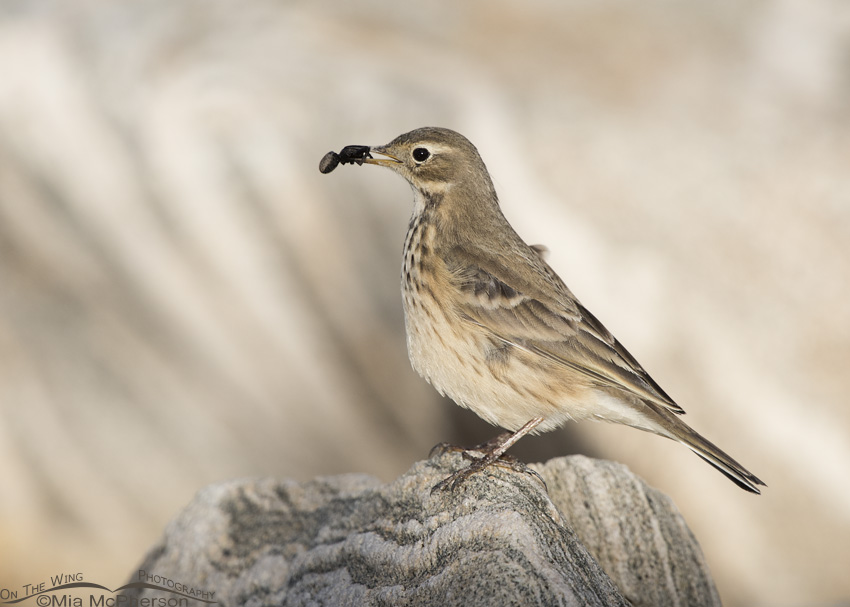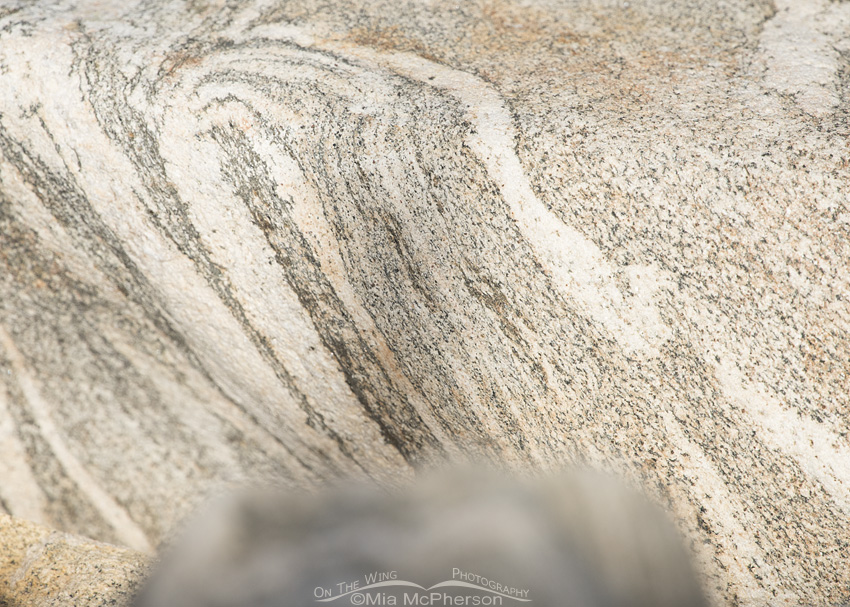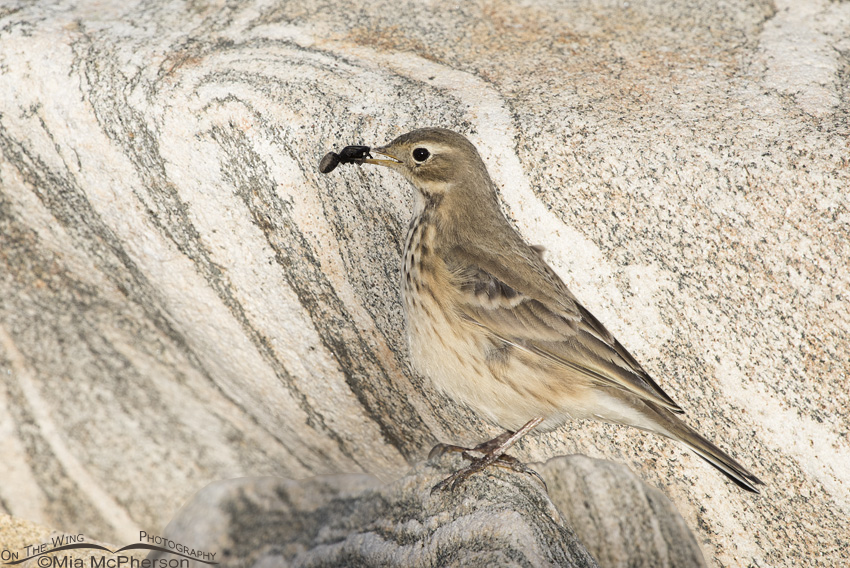 An American Pipit with a spider – Nikon D810, f6.3, 1/2000, ISO 400, Nikkor 500mm VR with 1.4x TC, natural light
An American Pipit with a spider – Nikon D810, f6.3, 1/2000, ISO 400, Nikkor 500mm VR with 1.4x TC, natural light
I was able to get a few images of an American Pipit with a spider two days ago while photographing the Peregrine Falcon from the Antelope Island causeway. I have never seen as many pipits as I have this year and their high numbers have been going on for at least a month now. Every where I go to photograph birds I hear and see the pipits. They must have had a very good breeding season.
This posts isn’t just about the American Pipit though, it is about eyes and the bokeh of a lens. In the image above the pipit and the spider and part of the rock it is perched on is in sharp focus while the background boulder is smooth and almost creamy looking. That is because of the bokeh of my lens causing the blur of the background.
Bokeh has been defined as “the way the lens renders out-of-focus points of light”. It also describes the appearance or feeling of the out of focus areas.
 Proterozoic Farmington Canyon gneiss boulder in the background – Nikon D810, f6.3, 1/2000, ISO 400, Nikkor 500mm VR with 1.4x TC, natural light
Proterozoic Farmington Canyon gneiss boulder in the background – Nikon D810, f6.3, 1/2000, ISO 400, Nikkor 500mm VR with 1.4x TC, natural light
The pipit flew off rather quickly, I only took three images of it and the last image I took shows the Proterozoic Farmington Canyon gneiss boulder that was behind the pipit. My lens very quickly focused on the boulder and because of the depth of field the rock the pipit had been perched on it out of focus in this frame. When I looked at this image I wanted to be able to show what features were in focus in this frame and not in focus and compare it to the frame with the pipit and spider in focus.
 American Pipit, spider and boulder composite
American Pipit, spider and boulder composite
By combining the two frames above as a composite I can show the boulder in the background much more sharply in focus along with the pipit and the spider (minus the birds shadow). If I had used f32 for my aperture I “might” have been able to get a frame with the bird, spider, boulder and perch all in sharp focus but I think the swirls and textures of the background boulder take the focus away from the subject. I actually prefer the smooth bokeh of the first image because the focus is on the American Pipit and the spider.
Life is good.
Mia
Click here to see more of my American Pipit photos plus facts and information about this species.
See this post on Bokeh and Background Blurs for more information on Bokeh.


Thanks Mia for introducing me to the word “bokeh”, which is apparently pronounced like a “bouquet” of flowers and is a Japanese term for the “subjective aesthetic quality of out-of-focus areas a photographic image”. How very fittingly poetic! And how in the world did that word escape me all these years? Sign me grateful!
Although the first image is probably “the best”, as someone who loves rocks, I find the layers, striations and folds of the rock fascinating…what a tremendous amount of time and energy went into its creation…how I would love to hear its story! Both the first and last images of the bird and its prey are pleasing to my eye…
Great photos & I learned something new!
I like the first image also but in the third image with the boulder in focus you can notice a pattern in the boulder behind the pipit that displays a shadow like appearance of the bird? Cool!
That is supposed to be Bokeh, Not booked.
Thanks Bobby.
Good images Mia. Booked is an important aspect.